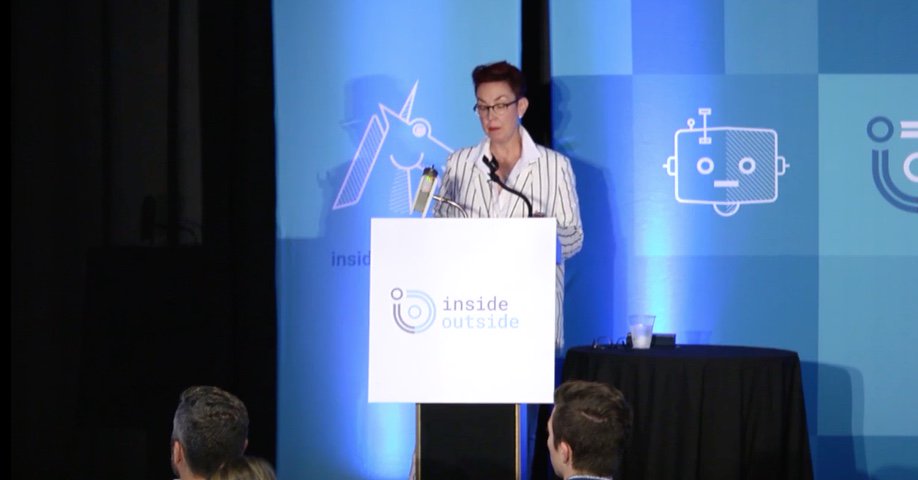
The Johnny Carson Center for Emerging Media Arts continues its planning to begin operations in the fall of 2019, focusing on its new curriculum, new facility and new faculty.
A new degree, the Bachelor of Fine Arts in Emerging Media Arts, is making its way through the curriculum approval process. The University of Nebraska Board of Regents approved the degree at its June 2018 meeting, and it will now go before Nebraska’s Coordinating Commission for Postsecondary Education for final consideration.
“Let’s unpack what we mean by Emerging Media Arts,” said Director Megan Elliott. “On the one hand, there’s emerging media, which equals technology. On the other hand, there’s media arts, which equals creativity. So Emerging Media Arts is the joining of technology and creativity. The joining of technology and creativity, and the combination of the intelligent machine and the human, leads to innovation. And let’s note that ‘emerging’ is not just a verb. Emerging is in the present perfect tense—it is always happening.”
Elliott said she believes that never before have storytellers and emerging media artists been so important to the world.
“We live in challenging times. It’s both scary and exciting,” she said. “It’s scary because of what I like to call the three A’s: automation, algorithms and artificial intelligence.”
According to an often cited research paper from Oxford University by Carl Benedikt Frey and Michael A. Osborne titled “The Future of Employment: How Susceptible Are Jobs to Computerization?,” artificial intelligence and robotics will automate 47 percent of jobs in the United States during our current students’ working lives. These include manufacturing jobs, cashiers and customer service assistants, but also lawyers, administrators, accountants and financial analysts, among other jobs.
“We don’t yet know what jobs will replace them because many of the jobs that our students will do upon graduation are yet to be invented,” Elliott said. “But on the other hand, has there ever been a moment in time more exciting?”
Elliott notes that what is younger than just about any of the students on campus right now are Google, Facebook, Snapchat, Instagram, Pinterest, Spotify, Minecraft, Uber, Airbnb, YouTube, Twitch, Twitter and Tesla.
“All of these companies were founded by small teams of people with growth mindsets in cities with big research universities,” she said. “Every single one of these companies found a problem to solve. One of the problems we are solving is how to robot-proof students and stakeholders and assist them to learn the skillsets they need to thrive in an era of artificial intelligence, intelligent machines and networked society. And the way we are solving that is by building the ultimate student-centric program with the goal that every graduate is able realize their dream job or raise money to start their dream company right out of school.”
To robot-proof students, the Carson Center will develop three new literacies across data, technology and what it means to become more deeply human.
“That means developing four new cognitive capacities—critical thinking, cultural agility, systems thinking and entrepreneurship. We’ve mapped this so critical thinking equals design; cultural agility equals storytelling; systems thinking equals code and computer science; and entrepreneurship,” she said.
That creates an “X-shaped graduate” who has mastered storytelling, design, code and entrepreneurship.
“The new BFA in Emerging Media Arts has been intentionally designed to robot-proof students for a future of life-long learning and relentless change,” Elliott said.
Within the BFA in Emerging Media Arts, students will select two of eight emphases from among experience design, immersive+interactive media, cinematic arts, story, virtual production, sensory media, data+art and sonic art.
“While we have emphases, the culture of the Carson Center will be one of convergence—a place to meet and inspire and dream ferociously big,” Elliott said. “And then prototype and iterate and finally execute. These emphases are not silos. They are the antithesis to that.”
Recruiting for the program will begin this fall, as will recruiting of faculty.
Construction to renovate the Carson Center’s facility at 13th and Q streets (in the former Nebraska Bookstore location) will begin soon.
“We’re super excited about the design,” Elliott said. “We’ve been working with a dream team from HDR and UNL Facilities Management for the past 14 months with loads of input from faculty and industry, programming and then designing the building. The space is built on the principles of flexibility, creativity, collaboration and making—so students can create anywhere at anytime.”
Elliott is looking forward to the opening in the fall of 2019.
“I can’t wait to see what it is they create, and how we collaborate with people across the campus, across industry and across the world,” she said.